🌲Hello and welcome back to another post! Today I will be reflecting on my experience during the most recent PLP spring exhibition. This exhibition was my favourite one to participate in: I am very proud of my final products and I really appreciated the experience. I’m excited to share my reflective thoughts with you!🌲

If you are familiar with PLP exhibitions, you’ll know that they are an event created with the intention to celebrate and showcase our learning from a PLP course (or courses) to a wider community. Usually, I present the final product of one PLP project that I had been working on – but, in the case of this exhibition, I presented two projects! So, let’s talk about them:
Project 1: Upstanders
This semester, I was enrolled in two PLP courses: PLP Humanities 11 and BC First Peoples (BCFP) 12. In Humanities, our project for the exhibition was called “Upstanders”. This project was an extension of our Holocaust project in which we learned about the history of the holocaust and the psychological impacts of trauma. The Upstanders project was meant to shed a positive light on how Upstanders have helped our world become a better place. Our product needed to be a multimodal text about an Upstander of our choice.
This project was a partner project and my partner was Nolan. Together, we decided that our upstander would be Chief dan George. Nolan and I wrote a brief description of who he was:

Geswanouth Slahoot (Chief Dan George) was the chief of the səlilwətaɬ (Tsleil-Waututh Nation) and stands as an important historical leader who worked to promote a better understanding of Indigenous peoples and their cultural values. The impacts of colonization on Indigenous communities fuelled Chief Dan George’s activism. His personal sufferings as an Indigenous person drove him to fight for the rights and recognition of Indigenous peoples across Canada. He used his platform as a writer, speaker, and actor to highlight the injustices faced by these communities. Chief Dan George became a powerful voice for his people through bridging artistry and advocacy.
We began our process through researching about our upstander. CLICK HERE to see our research document! After our research was completed though, things started to get a bit confusing: so let’s talk about BCFP.
Project 2: Painting with the Land
Our BCFP project was made to be a project that addressed how we can play a part in the process of Reconciliation. In our course, we explored many different topics, and we were meant to individually choose which topic we wanted to base our exhibition project on. I personally decided to focus my project on art and land.
My plan was to create a paint set made of Indigenous plants: I wanted to make something that visitors of the exhibition could engage with. My intent was for my audience to build a relationship with the land in a creative way. I really connected with the Land Systems unit, and I was very excited to add my own creative spin onto my learning from this unit in the course.
If you want to read more about my original plan, CLICK HERE.
My initial plan for my station ⬇️

The Combination
Now, remember how I left on a cliff hanger in the Upstanders project? Well, just after Nolan and I finished our research process, our final product pivoted. We were informed by the teachers that, rather than presenting both our Humanities project and BCFP project, we would combine them to become one. For Nolan and I, this meant pursuing our individual BCFP projects and connecting them to our Upstander. It should be noted though, that every pair in our class tackled the exhibition project differently. This new plan was a challenge, but we managed it well. Here’s how:
First, Nolan and I connected our BCFP projects. His plan was to create a Geocache showcasing Indigenous artworks in Deep Cove. We connected our ideas through the theme of connecting with the land through art.
Next, we connected our projects to our upstander Chief dan George. I planned to connect my project to him through creating a portrait of him using the plant paints I created.
Once we connected the projects, we created a plan. From there, it was mostly individual work.
My Process
Step 1: Create the paints + test them
I went on a nature walk with my sister across my neighbourhood and collected a variety of plants to test. After collecting them, I began creating a recipe for the paint before landing on one that worked best. Finally, I created some final swatches of five different Indigenous plants that I pondered including in my paint set.
Step 2: Decide which plants to make my paints with
Based on the swatches, I decided to choose buttercup, false lilly of the valley, and red cedar to be the three plants in my paint set. Once I decided this, I created a paper including the Holkemelem names for each paint in my set. I also named that paint set “Your Paint Forest”.

Step 3: Make an instruction sheet
I wanted to create a sheet for visitors to take a picture of and replicate the recipe at home after visiting my station.

Step 4: Make the portrait
The portrait process involved sketching, lining, and finally painting the figure. I then glued Chief dan George’s “Lament for confederation” speech to surround his portrait. This was meant to symbolize his activism and voice as an upstander, whilst also fulfilling the multimodal aspects of this project.
Step 5: Finalize each component
I compiled each of my products to prepare for the exhibition!

The Exhibition
Now that my individual work was complete, it was time to focus on the space itself. First, I needed to collaborate with Nolan to decide how our stations would look together:

We decided to organize the space so that our projects were on opposite ends of the table space, with the portrait of chief dan George in the centre to connect both of our projects.
This exhibition involved collaborating with three other PLP learners: Sabrina, Claire, and Max. We were all placed in the “Langage, Story, and Identity” section of the exhibition. As a group, we decided to each contribute to the decoration of the space in a different way.
Personally, I helped with a few different tasks:
- Creating and planning the Activation experience for our guests through a drink made of Indigenous berries
- Designing stamps for our game involving the berry drink
The Three Sisters Berry Drink

Sabrina and I harvested berries from the forest by my home ⬇️

And created a delicious drink ⬇️


The Stamps
I designed four cute stamps ⬇️

And Nolan brought them to life with his 3D printer!

And then, before I knew it, the day had come!
The exhibition was wonderfully chaotic. I met so many lovely people who were very excited about my project and ideas. I had so many meaningful conversations and learned so much! It was also fantastic to see all of the creations that each visitor made. I really enjoyed working with my friends in this project too. Nolan did a great job at supporting me on exhibition day which I really appreciated.
Also, everyone really enjoyed the berry drink which was awesome! Plus, so many people loved the stamp idea and found it really entertaining.
The PLP spring exhibition was successful and exciting. And, while it took a lot of work, I felt it was completely worth the effort.

🌲 I am currently suffering from last-week-of-school-brain dysfunction and so I do apologize that this post didn’t cover a lot of the intricacies of this exhibition, but I hope that regardless of my condition you were able to get a glimpse of my creative process! I learned so much throughout the process of preparing for this exhibition and I’m so proud of my success. 🌲
Thank you for watching me grow in the forest of
🌲 learning 🌲





















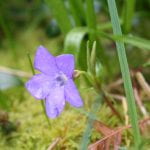
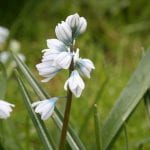
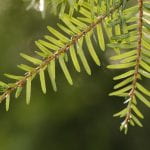
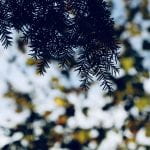




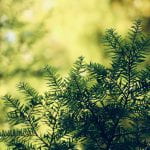







Leave a Reply